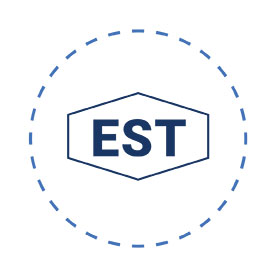OUR SERVICES
We negotiate collective bargaining agreements on behalf of owners and operators of real property with unions that represent their maintenance and operating employees.
The major unions representing employees in the building service industry are SEIU; Local 32BJ, which represents porters, cleaners, elevator operators, handypersons, doormen, window cleaners, security guards, and superintendents in both residential and commercial buildings; Local 94, Local 30, and Local 68, which represents operating engineers; and Local 670, and a Craft Group, which represents painters, plumbers, electricians, and carpenters.
Our agreements, although generally similar to the direct agreement between independent owners and unions, are preferable to direct agreements which contain some more onerous conditions, particularly in the area of force reductions, discrimination, venue, ever-green provisions, and management rights.
Membership in the RAB entitles each member to come under the umbrella of our agreement with any cost for appearance before various arbitration forums being paid for by the Board rather than by the individual member. We will also represent members at these proceedings without additional charge.
We also sit on multiple committees where we serve as a representative of the building service industry and continue to negotiate collective bargaining agreements on behalf of our members who employ the major unions in the building service industry.

1934
The RAB was established in 1934 as a result of a building service employees strike and, through the years, has been concerned with labor-management relations and the numerous issues in the industry affecting wages, hours, and working conditions of the various groups of employees who service, maintain, and operate residential, office, and loft buildings.
1951
In the ensuing years, the RAB pioneered the implementation of benefit funds for building service employees and, in 1951, it helped establish the first joint employer-union welfare fund providing hospitalization, surgical, and group life benefits to approximately 25,000 workers.


1957
In 1957, agreements reached with commercial building owners created the industry’s first pension plan and three years later over 1,000 employees were provided retirement benefits.
1978
In 1978, the Board became a multi-employer association which bound its members to the terms and conditions of negotiated agreements provided that the unions involved have full authority to negotiate a collective bargaining agreement without the need for subsequent ratification. That same year the RAB, along with other partners, established of the Office of the Contract Arbitrator where future arbitrations between the parties would be held.


1996
In 1996 we were instrumental in resolving the longest strike in 50 years of industry history. Lasting 31 days in the depths of winter, we helped our members maintain most of their essential building operations and kept service disruptions to a minimum while negotiating a fair and acceptable contract settlement.
2001
The tragedy of 9/11 brought the industry and the Union together. On that fateful day, 28 Union members lost their lives. As a result of the destruction of the World Trade Center and surrounding buildings, the parties provided counseling for all affected individuals. In addition, to avoid even more chaos, we set up a special preferential hiring list and the suspension of bumping rights to afford displaced workers the opportunity for reemployment into buildings. All workers that wanted to be reemployed were afforded that opportunity.


2005
In 2005, bargaining began and ended in September, three months early as the 32BJ Health Fund was running out of money. The industry provided an immediate infusion of cash and substantially increased the Employer contribution. The parties established the first Health Care Savings/Study Committee. This Agreement froze wages during the first year of the new Agreement.
2009
2009 marked the year of the untimely death of Jim Berg who had been employed at the RAB for 39 years, 25 as its President. Jim was succeeded by Howard Rothschild who had previously been employed as a Staff Attorney and the Executive Vice President.
2009 also marked the year that the Supreme Court of the United States ruled in favor of the RAB’s arguments in 14 Penn Plaza LLC v. Pyett, a landmark labor law case that permitted unions to require their members to arbitrate statutory discrimination claims raised against their employers.


2010
In 2010 during the negotiation of the Apartment Building Agreement, the parties agreed to convene another Health Care Savings/Study Committee and committed to saving at least $70 million dollars per year on health care.
2015
In 2015, after Hurricane Sandy the industry again stepped up to take care of affected workers with enhanced benefits and again provided for a suspension of bumping rights.


2017
In 2017, during the negotiation of the Apartment Building Agreement, the parties agreed to convene another Health Care Savings/Study Committee and committed to saving at least $70 million dollars per year on health care.
RAB started representing the New York City Schools Support Services (NYCSSS) which employs about 6,000 unionized employees in the NYC Public Schools.
2018
In 2018, the RAB moved to its new home in One Penn Plaza after more than 50 years spent at 292 Madison Avenue.


2019
The RAB continues to grow and expand its membership base, service offerings, and staff to provide first rate service across its portfolio.
The RAB started representing Employers in the Metal Polishing Industry.
2020
During the COVID-19 pandemic the RAB immediately trains the industry with numerous webinars in an ever-changing environment. Negotiates numerous Memorandum of Agreements with different Unions for Shared Work Programs, extended health care and greater contract flexibility.

